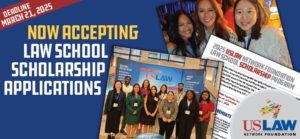Immersion Legal Jury LLC, a nationally based jury consulting firm, has been named the official jury consulting… Continue Reading
What You Need to Know About the 116,000 Immigration Petitions Rejected by the Immigration Service
POSTED APRIL 16, 2019
By Iosif Sorokin, Larson • King, LLP

Alternative 1: Employment with a cap-exempt employer
Cap-exempt employers are primarily universities and their affiliated non-profit organizations, as well as non-profit research organizations. These employers do not need to use the H-1B lottery process described above and instead may apply for H-1B status for employees at any time.
Employers who are subject to the cap can take advantage of this by hiring these employees part-time. For example, an IT company could hire a computer scientist currently working at a university in H-1B status for a part-time position at their company without having to go through the cap.
Similarly, a cap-subject employer can place an employee at a cap-exempt entity full time without going through the cap. For example, a physician staffing company could place its physicians at a non-profit university hospital full time, without having to go through the cap.
Alternative 2: Special immigration provisions
There are several one-off provisions in our immigration law that provide for employment authorization for certain employees without having to go through the H-1B cap. For example, employers hiring extraordinarily skilled and accomplished employees with lengthy CVs can use the O-1 visa to get employment authorization for these employees.
Special provisions based on international treaties also exist for employer to hire citizens of Canada, Mexico, Australia, Chile, and Singapore to work in professional positions.
Alternative 3: Skip directly to green card
Finally, an employer can choose to bypass the H-1B cap entirely by sponsoring an employee for permanent employment authorization (a “green card”). This process takes longer and requires greater buy in from the employer, but avoids the uncertainty of the lottery system. Unfortunately this alternative will not work for employees born in India or China, because they face such long wait times to receive their green cards.
The list above is not meant to be exhaustive as other short term alternatives to H-1B employment authorization exist (such as a STEM OPT extension for employees who recently graduated from a university program). But this list represents some potential alternatives for employers and professionals looking at ways to obtain work authorization for their employees.










